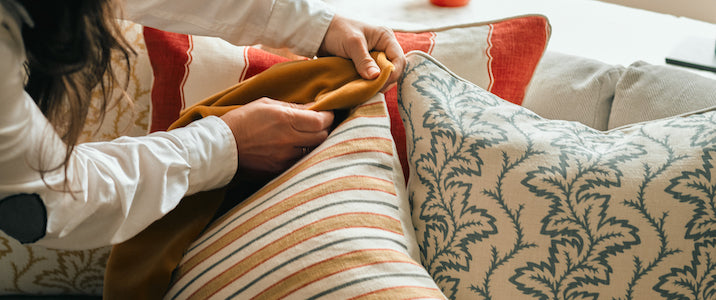The Environmental Impact of Buying New vs. Surplus Fabrics
You probably know where we stand on this one, but when it comes to home renovation and interior design, every choice we make has an impact - on our space, our wallet, and the planet. One of the biggest decisions? The fabrics we use. Whether it's reupholstering a beloved chair or choosing curtains for a fresh look, the materials we select can make a world of difference. But how do new fabrics stack up against surplus or pre-loved textiles? Let’s unravel the truth.
The Hidden Cost of New Fabrics
The textile industry is one of the largest contributors to environmental waste and pollution. The process of manufacturing new fabrics involves:
- High Water Consumption: Cotton production alone requires thousands of litres of water per kilogram.
- Energy-Intensive Processes: From fibre cultivation to dyeing and weaving, energy use adds up—often from non-renewable sources.
- Chemical Pollution: Fabric dyes and treatments can release harmful chemicals into waterways, damaging ecosystems and communities.
- Waste and Overproduction: Luxury brands and manufacturers often produce surplus stock, meaning brand-new textiles go unused and end up in landfills or incinerators.
So, while that freshly woven linen or plush velvet may look beautiful, it often comes at a hidden environmental cost.
The Case for Surplus and Recycled Fabrics
By choosing surplus fabrics, you're not just making a stylish decision - you’re taking a stand for the planet. Here’s how opting for pre-loved or excess textiles makes a difference:
- Circular Economy Interiors: Using surplus fabric keeps high-quality textiles in circulation rather than in the bin. It’s all about rethinking waste as a resource.
- Low-Impact Home Renovation: Instead of contributing to new production, surplus textiles make use of materials already in existence, reducing demand on resources.
- Lower Carbon Footprint: Reusing fabrics eliminates the need for energy-intensive production and transport emissions associated with creating new materials.
- Unique & Luxe for Less: These fabrics often come from high-end luxury brands, meaning you can get designer quality at a fraction of the cost - and with a clear conscience.
Small Changes, Big Impact
Sustainability doesn’t have to mean compromise. It can be as simple as choosing recycled fabric upholstery for a beloved armchair, or selecting surplus linen for your new curtains. Thoughtful choices like these contribute to a more sustainable future while making your home truly unique.
At Haines, we believe in turning surplus into something stunning. By choosing pre-loved fabrics, you're not just decorating - you’re pioneering a shift towards mindful interiors. So, let’s create homes that are as kind to the planet as they are to us.
Ready to reimagine your space with surplus fabrics? Explore our collection here.





